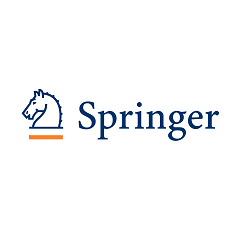دانلود ترجمه مقاله تلفیق روش های کمی و کیفی در فرایند تحقیق – مجله Taylor & Francis
|
دانلود رایگان مقاله انگلیسی + خرید ترجمه فارسی
|
|
| عنوان فارسی مقاله: | تلفیق روش ها: ورود رویکرد های کمی و کیفی به فرایند تحقیق |
| عنوان انگلیسی مقاله: | Mixing Methods: The Entry of Qualitative and Quantitative Approaches into the Research Process |
| مشخصات مقاله انگلیسی (PDF) | |
| سال انتشار مقاله | ۲۰۰۵ |
| تعداد صفحات مقاله انگلیسی | ۱۳ صفحه با فرمت pdf |
| رشته های مرتبط با این مقاله | علوم اجتماعی و مدیریت |
| گرایش های مرتبط با این مقاله | پژوهشگری اجتماعی، برنامهریزی اجتماعی، تعاون و رفاه اجتماعی و مردم شناسی |
| مجله مربوطه | مجله بین المللی روش تحقیق در علوم اجتماعی (International Journal of Social Research Methodology) |
| دانشگاه تهیه کننده | موسسه آموزش، دانشگاه لندن |
| شناسه شاپا یا ISSN | ISSN ۱۳۶۴–۵۵۷۹ |
| لینک مقاله در سایت مرجع | لینک این مقاله در سایت Taylor & Francis |
| نشریه تیلور و فرانسیس | Taylor & Francis |
| مشخصات و وضعیت ترجمه مقاله (Word) | |
| تعداد صفحات ترجمه مقاله | ۱۹ صفحه با فرمت ورد، به صورت تایپ شده و با فونت ۱۴ – B Nazanin |
| ترجمه اشکال | ترجمه توضیحات داخل و زیر جداول انجام شده است. |
فهرست مطالب:
نمونه تفکیک(واگرایی) و نمونه همگرایی
کار های کمی و کیفی
زمینه استفسا
زمینه توجیه
تحقیقات کاربردی کمی و کیفی
مرحله طراحی تحقیق
مرحله کار میدانی
تفسیر و ضمنی سازی
نتیجه گیری
بخشی از ترجمه:
یک راهبرد چند روشه را می توان در یک یا چند مرحله فرایند تحقیق وارد کرد. طراحی تحقیق، جمع آوری داده ها، تفسیر و ضمنی سازی داده ها. استدلال این می باشد که در درک عمل و ارزش تحقیق کیفی و کمی، تمایز بین زمینه هایی که در ان محققان تحقیقی را برای اهداف خاص طراحی کرده و سوالات ویژه ای را قالب بندی می کنند که در آن داده ها مفهومی شده و سپس نسبت به فرضیات هستی شناسی، معرفت شناختی و تئوری مجددا ضمنی می شوند مهم است. این مقاله نمونه هایی از تحقیقات را ارایه کرد که در آن روش های مختلفی برای حل ابعاد مختلف طرح های تحقیقاتی و پاسخ به سوالات تحقیقاتی متعدد دیده می شوند. هم چنین نشان داده شد که چگونه طرح های تحقیقاتی ما را بر آن وا می دارند تا گروه های ویژه ای را پیدا کرده و این که چگونه یک نمونه کمی ممکن است منجر به شناسایی گروه های مربوطه برای یک مطالعه عمقی شود. هم چنین به ارتباط یک نمونه کیفی به نمونه های معرف آماری و مزیت ها برای احزاب دیگر اشاره شده است. در صورتی که نمونه های معرف ملی نتوانند گروه هایی را تولید کنند که مد نظر محققان کیفی است، معایب نیز روز به روز افزایش خواهد کرد.
هم چنین این مقاله پیشنهاد می کند که یک روش میدانی می تواند در بر گیرنده یک رویکرد کمی باشد طوری که داده های در خصوص ایتم های ویژه به طور سیستماتیک جمع آوری می شود، و برخی سوالات در برنامه مصاحبه به طور کمی پاسخ داده شدند( برای مثال سوالاتی در خصوص رفتار و عمل) در حالی که سایرین دارای صفت کیفی بودند. یک روش مصاحبه گیری که به مصاحبه کنندکان امکان موشکافی و تحقیق بیشتر را می دهد و به مصاحبه شوندکان امکان نقل و باز گویی کامل تجارب را می دهد، می تواند منجر به یک تصویر واقعی از درک افراد شود تا آنالیز های نظر سنجی سنتی که تنها مفاهیمی را نشان می دهند که شرکت کنندگان تحقیقاتی تنها با توجه به اعمال و کردار خود بررسی می شوند.
بخشی از مقاله انگلیسی:
The Case for Separation and the Case for Convergence The case for separate paradigms is that qualitative and quantitative researchers hold different epistemological assumptions, belong to different research cultures and have different researcher biographies that work against convergence (Brannen, 1992). Indeed qualitative researchers are embracing even greater reflexivity, for example taking account of the influence of the researcher in the research encounter, finding new ways of relating the voices of marginal groups to academic knowledge and researcher interpretation (see for example articles in this journal and Ribbens & Edwards, 1998). On the quantitative front researchers are constantly urged by bodies such as the UK’s Economic and Social Research Council to develop their skills base in order to keep up with developments elsewhere (notably the US); this may serve to maintain the barricades between qualitative and quantitative research through ever greater sophistication and complexity of statistical techniques. While researchers rationalize their interpretive frameworks in terms of fundamental distinctions of ontology, epistemology and theory, they develop over time habits and dispositions as well as particular expertise and preferences for particular approaches and may lack the time and inclination to extend skills and interests in other directions and across the qualitative/quantitative divide. Research practice is also shaped by the research environment—by the funds available for a research project and by the shortterm contracts of many researchers in the UK. While research practices diverge, there is considerable pressure for convergence at this present time. Externally, there is increased demand for research to inform policy and for practical rather than scientific research, again a trend that may work against specialization in either qualitative or quantitative research (see Hammersley, 2000). The importance placed upon particular types of research evidence is subject to changes in political climates and persuasions. As Janet Finch argued in the 1980s, British government has long preferred quantitative evidence in contrast to more pluralistic methodological preferences of US governments in the same period (Finch, 1986). Currently, there are external pressures, from national and EU funders, for researchers to inform policy and therefore to disseminate in lay language. There is a whole industry in Britain and the US, and increasingly Europe, devoted to evaluation of policy that utilizes qualitative as well as quantitative methods (Ritchie & Lewis, 2003). In the US, the demand for qualitative research has been caught up in the wider politics of interest groups who have argued that the benefits of government programmes to the poor did not show up in much quantitative work (Ong, 1999). Many of these trends suggest greater rather than less convergence between approaches. Both externally and internally, the pressures of research markets and the marketization of universities in the 1990s and twenty-first century are leading to the institutionalization of research training. The arrival of a skills-based economy in which training has superseded notions of apprenticeship is as influential in research as elsewhere in the labour market. In Britain, in the past ten to fifteen years, we have seen a steady expansion in masters’ degrees courses in research methods and in other courses dedicated to research training. Today’s students on masters courses are typically introduced to both qualitative and quantitative methods, whereas in the past they were not exposed to such a wide range of methods. Pressure from users and the enhanced diversity of skills influence the type of research that is done as well as the questions posed, and how they are addressed. They also affect how research is written up for different audiences or ‘user’ groups. Downloaded by [79.127.114.40] at 10:14 23 February 2014 International Journal of Social Research Methodology 175 Researchers today are required to communicate in ‘double speak’: in the specialized languages that define their ‘fields’ (as opposed to disciplines) (Bernstein, 2000) and in a generic, popular language that addresses ‘research users’. Such emphasis upon dissemination may have the effect of increasing the importance of research which takes an action perspective, that is draws upon actors’ perspectives both in the interpretation and in the presentation of the data. This is not to suggest, however, that quantitative research is being displaced. However, responding to pressures from funders and the demand to disseminate and to do so in particular kinds of ways can result in epistemological issues vanishing from view in the way data analysis is discussed, while methodological issues may be reduced to skills training. Lack of space in the article format also can mean that methodological issues are relegated to footnotes, while in books they appear in appendices or end notes. These pressures have on the other hand helped to generate an increase in journals and books devoted to methodological issues. Yet while I have made a case for greater pressure to work qualitatively and quantitatively, it is also possible to argue that the continuing existence of the separate paradigms approach is a healthy sign that such matters are still a subject for debate. Having reviewed many journal articles on methodology in recent years, I would suggest that there is strong support for working both qualitatively and quantitatively. In the current trend towards evidence-based practice and the systematic review of social science research, research that combines qualitative and quantitative methods needs particular attention. The task for reviewers is a hard one if the published methodological evidence for either approach is wanting.
|
دانلود رایگان مقاله انگلیسی + خرید ترجمه فارسی
|
|
| عنوان فارسی مقاله: | تلفیق روش ها: ورود رویکرد های کمی و کیفی به فرایند تحقیق |
| عنوان انگلیسی مقاله: | Mixing Methods: The Entry of Qualitative and Quantitative Approaches into the Research Process |


